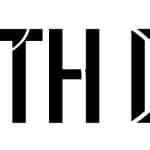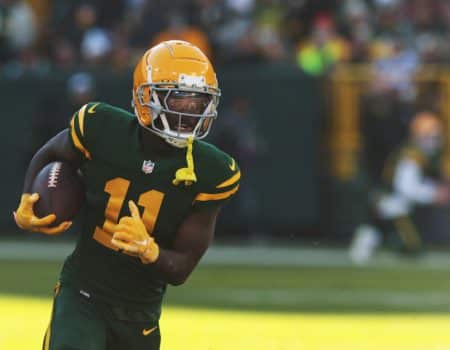Adam Gase has been a polarizing coach to many fantasy players over the years. How will his style affect the Jets in 2019? Also, do us a solid and follow Mike Sullivan on Twitter (@mikesully58.)
Adam Gase is the new head coach, as well as interim general manager, for the New York Jets after three seasons as head coach for the Miami Dolphins. Prior to that Gase was the offensive coordinator in Chicago (2015) and the offensive coordinator in Denver (2013-14). He also had several positions in the NFL prior to becoming offensive coordinator in 2013. For the purposes of this article we will focus on the time he has been in charge of calling plays, as this gives the most insight into fantasy implications for 2019.
Gase has often been a polarizing head coach/offensive coordinator in his career for many fantasy players. He was part of the Denver Broncos offense, led by Peyton Manning in 2013-2014, and that was highly productive. Yet, he was also in charge of a Miami Dolphins offense that often left a bitter taste over the last three years (especially for Kenyan Drake owners).
Also See: Fantasy Impact of Kliff Kingsbury Joining Cardinals
No matter how you feel about Gase, he is still around, which has fantasy football ramifications. This is what this article is for, as we look to the future by reviewing the past to extrapolate as much evidence as we can about what to expect from the Jets from a fantasy perspective.

Gase and Jets: Quarterback
In his six years as a coach and coordinator, Gase has had ten quarterbacks start NFL games under him. Most notably: his time with the Broncos in 2013 and 2014 with Manning. Since then, Gase has appeared to struggle to find a quarterback who could be successful within his offense. In these six years, the top quarterback from each year averaged an 18th-ranked fantasy finish. But if we take away Manning’s two seasons, when he finished 1st and 3rd, then we are left with a 26th ranked fantasy finish amongst top quarterbacks in his offense.
If we dive a little deeper, we can really get an idea of Gase’s offensive style. I went ahead and removed guys like Matt Moore, Jimmy Clausen, and Brock Osweiler (who all started at one point or another) from some of the statistics, as this leaves us with quarterbacks having started in at least 11 games per season. This list includes Ryan Tannehill (twice), Jay Cutler (twice) and Peyton Manning (twice). These three guys over six seasons, averaged an approximate stat line of 309-471, 65% completion percentage, 3,583 yards, 28 touchdowns, 12 interceptions, 11 yards per reception, and 247 yards per game. This resulted in an overall average quarterback rating per season of 90.58.
Again, if we remove Manning’s two top-three seasons, things get uglier. Over four seasons, Tannehill and Cutler averaged a stat line of 253-393, 64.4% completion percentage, 2,824 yards, 19 touchdowns, 11 interceptions, 11 yards per reception and 211 yards per game for an overall quarterback rating of 81.72. Nearly all the major categories fell drastically and leads to what might be in store for Sam Darnold.
Fantasy Implications
Darnold got the nod in his rookie year for the Jets and ended up starting in 13 games. He appeared to take strides toward the end of the year and finished with a stat line of 239-414, 57.7 completion percentage, 2,865 yards, 17 touchdowns and 15 interceptions. Now this is fairly close to Cutler and Tannehill over four seasons, as he had 14 less completions, 21 more attempts, 41 more yards, two less touchdowns, and six more interceptions.
As many might agree, Darnold isn’t on pace to put up Manning-like numbers. However, it is promising that he nearly matched the performances of Tannehill and Cutler in his rookie year. I believe Darnold continues to progress as a quarterback, as he still is only 21 years old, but we’re here to look at his potential in 2019. Currently he is the 20th ranked quarterback in terms of ADP (11.10), but he’s not one I’m going to want as my starting quarterback in fantasy. He does have some good weapons to work with, but I can see him staying closer to the kind of production we analyzed above, minus Manning’s input. I could see him put up around 3,000 yards and 25 touchdowns, finishing around the 15-20 range for quarterbacks.
Gase and Jets: Running Backs
Since 2013, Gase has had 19 running backs with at least 35 carries per season. As many may agree, especially if you were a Drake owner in 2018, it appears Gase has been all over the map when it comes to running back usage. Since 2013, the biggest difference between RB1 and RB2 in terms of attempts per year has been 225 (Ajayi, 2016) and as low as 5 (Ajayi, 2017). Gase has also had two running backs crack 100+ attempts in five of his six years in the NFL.
If we dive a little deeper, Gase has had 11 running backs with at least 106 rushing attempts. This averages out to a total stat line of 165 rushing attempts, 723 yards, 4.54 touchdowns, 53 yards per game and 12.5 attempts per game. Although there were several outliers, Gase has only had two running backs crack 1,000 yards. In the passing game, Gase-led running backs also averaged 30 receptions on 42 targets, 262 yards, and 1.5 touchdowns. Drake and Knowshon Moreno saw significant targets and receptions out of the backfield, with at least 70 targets and over 50 receptions.
Gase has had three running backs finish as a top-12 option in fantasy and had Drake finish as 14th last year. If we look at the running backs who finished as a top-12 option in fantasy (four total), the most weekly RB1 performances any one of them had was eight (Matt Forte, 2015). The highest average weekly finish of these running backs was also 15th (Moreno, 2013). This gets me to think, that just like Drake in 2018, Gase’s offense is flat-out inconsistent for fantasy running back purposes.
Fantasy Implications
Le’Veon Bell comes to town and is slated to be the workhorse back for the Jets after sitting out the 2018 season. Bell currently holds a first round ADP (1.08) and is arguably the most talented back Gase has had to work with. But the real question is how he will get utilized. Gase has only had two running backs with over 180 touches in a season (Jay Ajayi 2016, Moreno 2013). But Bell is on a different level than Moreno and Ajayi and could be in line for 200+ carries. If Bell remains healthy, I could see him getting back to form and cracking the top-12 final ranking at RB, but I can also see some week-to-week headaches because of expected inconsistencies with Gase’s usage.
Behind Bell is Ty Montgomery, who signed this off-season, followed by Elijah Mcguire and Trenton Cannon. With Gase-led offenses averaging 418 rushing attempts in the last six years, it’s conceivable that we could see another RB in this backfield crack 100-120 touches. Now, I don’t expect any of them to be fantasy relevant, but if history repeats itself, one of these guys could be a thorn in the Bell owner’s side. I also don’t see any of these three guys being more than an RB3 type player, but should Bell go down. I believe it may go straight to a running back by committee approach.
Gase and Jets: Wide Receiver
Gase’s offenses have had their ups and downs at the wide receiver position over the years. He has had four wide receivers finish in the top five at the position but has also had several finishes outside of the top 30.
One could argue that the talent level was a factor, as in 2018 when Danny Amendola finished as the number one receiver on the team (in terms of targets, receptions, yards). Then you have 2014 where Demaryius Thomas finished as the number one receiver and Emmanuel Sanders as the number five in PPR formats. It also helped that Manning was throwing them the ball.
If we look a little deeper at overall statistics, Gase has had 15 receivers since 2013 catch at least 60+ targets (8 with at least 100 targets). These receivers combined for a total stat line of 111 targets, 72 receptions, 935 yards and 6.7 touchdowns. This is a respectable stat line but is in large part due to a handful of players. Thomas totaled 326 targets in 2013 and 2014, Jarvis Landry had 292 in 2016 and 201, and Eric Decker had 136 in 2013. Also, these receivers averaged 12.42 yards per reception, 4.87 receptions per game and 63.25 yards per game.
Fantasy Implications
The Jets have Robby Anderson, Quincy Enunwa and Jamison Crowder slated as their top three options on the outside. Anderson has flashed at times, but also struggled with Arnold being able to hit him with the deep ball. They began to click toward the end of the season, which I think can only carry over into next season. With Darnold’s hopeful progression I feel like Anderson, with the highest ADP in the seventh round (7.06), can possibly make the leap from 36th ranked wide receiver into high-end WR3 territory with some upside.
Enunwa appeared to perform quite well at times out of the slot, yet finished around the 80th wide receiver, but Crowder has also primarily worked outside of the slot. Both Enunwa and Crowder struggled with injury in 2018. It’ll be interesting to see who ends up playing where, but current depth charts show Enunwa on the outside and Crowder in the slot. This should make for some difficult fantasy decisions between these two, but I feel like the best play out of the receivers in 2019 is going to be Anderson, as Enunwa and Crowder May battle each other for targets.
Gase and Jets: Tight End
Having a tight end under Adam Gase has not been helpful in terms of fantasy for some time now. Over his six years he has had seven tight ends who had at least 32 targets on the year. These tight ends averaged a stat line of approximately 58 targets, 40.5 receptions and 5.6 touchdowns, along with 10.5 yards per reception, 3 receptions per game and 32 yards per game. Now, talent can possibly be attributed to this as at times Mike Gesicki, Dion Sims, and Zach Miller were the top tight ends on a Gase-led team.
However, he also had Julius Thomas, who finished as a top-10 tight end during the 2013-2014 Broncos run. In Gase’s first year (2013), Thomas finished as the number three fantasy tight end (again, Manning helped). Outside of Thomas in 2013-2014, the best finish Gase has had from a tight end was 16th with Miller in 2015.
Fantasy Implications
Gase currently has Chris Herndon, Jordan Leggett, and Trevon Wesco on his depth chart. Neither has seen significant playing time and Leggett is currently the most veteran tight end entering his third season. The real fantasy implications appear to center around Herndon, who flashed at times in 2018 with 39 receptions, 502 yards, and four touchdowns. He appears to be the starter entering 2019 and could potentially continue to grow into a decent fantasy option, but his usage will need to continue to increase.
Herndon only started in 12 games in 2018, but if we project his stats out to a full season it would have looked like 52 receptions 669 yards, and 5 touchdowns. This places him already above the average tight end production Gase has seen. With a 13th round ADP (13.08) he could be a potential late round target in what could be a tough tight end class again in 2019.






No Comment! Be the first one.